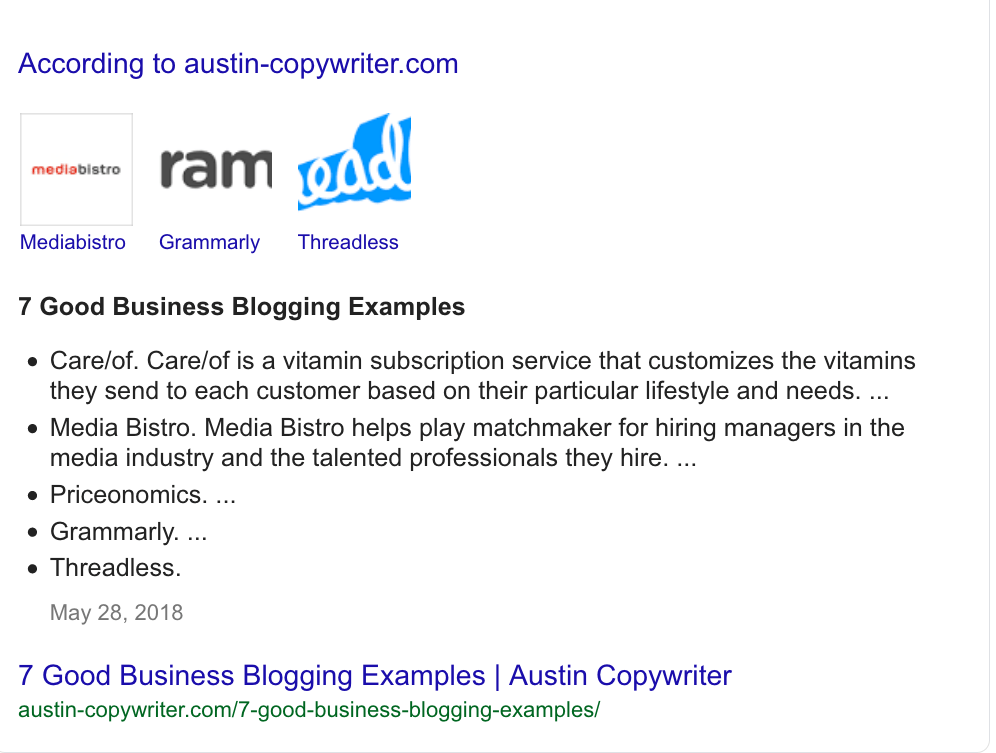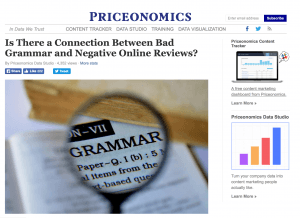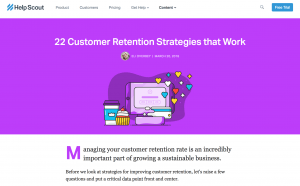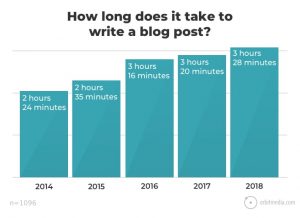
Updated October 2020
For almost any question you have or any product you decide to buy, you probably turn first to the internet. Google—and to a lesser degree Bing, Yahoo and social sites like Facebook—has become a huge part of how we learn new information and make purchasing decisions. For businesses, that means online visibility plays an important role in being the answer people find when they go looking for what you offer.
And business blogging is one of the best tools you have for achieving online visibility.
Business Blogging Isn’t Easy
If business blogging makes such a big difference, why isn’t every business doing it? Because to do it well (and it’s only worth doing if you do it well) requires a large commitment in time and resources. Orbit Media’s annual blogging survey found that, on average, it takes nearly four hours to write a blog post.
And as someone who writes multiple blog posts every week, I can tell you time is only one part of what makes it hard. Writing requires mental energy and creativity. Most people can’t sit down and write all day long—at some point your brain gets tapped out. And if you try to write too much for too long, you risk content writing burnout.
Blogging is hard work and many businesses fail to realize just how hard it is until they get started. The dead blogs you see from time to time on business websites—ones that haven’t been updated in months or years—are typically the result of overly ambitious businesses that failed to account for how hard creating blog content on a regular basis really is.
But even though it’s hard, business blogging is worth it. The results are impressive and doing it well is absolutely within your reach, you just may need to bring in some extra talent to help. For businesses struggling to keep up with the endless work a blog requires, hiring a freelance blog writer may be the solution you need.
You Should Hire a Freelance Blog Writer If…
Here are some of the common challenges that hiring a freelance blogger will solve.
1. Your team is struggling to meet your content creation goals.
As already discussed, consistently creating good content is hard. And trying to do more than you can reasonably manage is bad for overall productivity, and can potentially even be bad for your health.
In the Content Marketing Institute’s 2020 research, 63% of marketers who reported low levels of success said content creation was one of their biggest challenges. If the main thing holding you back is the inability to keep up with the amount of content your strategy requires, a freelance blog writer can make all the difference.
2. You want to scale up how much content you produce to get better results.
While content marketing professionals often talk about the importance of quality over quantity in content, the fact is that blogging more tends to get better results. HubSpot found that companies posting over 16 posts a month got over 3.5 times the results of those who post 4 or less.
16 posts a month comes to around four posts a week. Unless you have a large team of content creators at your business devoted primarily to blogging, meeting that goal will be extremely difficult to manage without outside help. The easiest way to scale up is to outsource some of your blog writing needs to freelancers.
3. You lost an employee and need some help picking up the slack.
Talented employees are in high demand and, even if your company works hard to make it a great place to work, some of your workers will inevitably be lured away to other opportunities. When you lose one of your best employees, you need to find someone to fill in fast. A freelance blog writer (or a few) can often help you manage your content needs while you work on replacing your employee.
4. You need help, but don’t have room in the budget to bring on a full-time employee.
For many businesses, talent is the biggest expense you have. The cost of a good employee goes far beyond the amount they get in their paycheck. You have to factor benefits into the budget, including the cost of paid time off, health insurance, retirement benefits, and unemployment and social security taxes. You’re also responsible for the cost of any supplies they need to do the job, and for additional office space if they’re expected to come to an office every day.
For freelancers, you only pay the amount they bill for the work you hire them for. If you don’t have full-time needs, you can hire them for the specific amount of work you need, and you won’t have to pay for anything beyond that. The result is that marketing departments generally save money by hiring a couple of good freelancers versus finding a full-time employee to do the work.
5. Your level of need isn’t high enough for a full-time position.
If you just need help producing a few extra blog posts a month, then it probably doesn’t make sense financially to bring on a new full-time employee. Freelancers work with a number of clients, so they don’t expect to be assigned or paid for 40 hours a week from you.
If you only need work that amounts to a few hours a week—say somewhere from one to ten blog posts a month—then finding a freelance blogger is more practical than going through the hiring process for an employee.
6. You worry you’re getting rusty and need help with fresh ideas.
When you spend your days mired in the same industry, at some point it becomes impossible to see it with fresh eyes. Freelancers are good for bringing new ideas to the table. And crucially, they can often help you see things the way consumers—who don’t spend all day, every day working in the industry—do. That’s valuable for writing content that speaks to the people you most want to reach.
7. You’ve got great ideas, but struggle with turning them into well written blog posts.
This is the opposite issue, but a common one many people face. If you’re just brimming with ideas, but find the process of turning them into strong blog posts that are organized well for readability and optimized for SEO insurmountable, that’s exactly the skill good freelance blog writers bring to the table.
The ability to create a good content marketing strategy that includes a list of blog topics is a valuable skill to have, but it only pays off if you can execute on the strategy. If that’s the part you struggle with, outsource it to someone who excels at getting the writing done.
Hire a Freelance Blog Writer
If you’ve confirmed that it’s time to hire a freelancer to help out with your blog, the next step is finding a freelance writer that’s a good fit.
Or since you’re on a freelance blogger’s website right now. you can check out my writing samples and learn a little about how I work to see if we might be a good fit.
And even when I’m not a fit for a client, I often try to help point them in the right direction to find another writer, so feel free to get in touch with the details of what you need.




 Media Bistro helps play matchmaker for hiring managers in the media industry and the talented professionals they hire. Since the company has two equally important audiences, they produce two blogs:
Media Bistro helps play matchmaker for hiring managers in the media industry and the talented professionals they hire. Since the company has two equally important audiences, they produce two blogs: 




 vast and awash in content.
vast and awash in content. 
